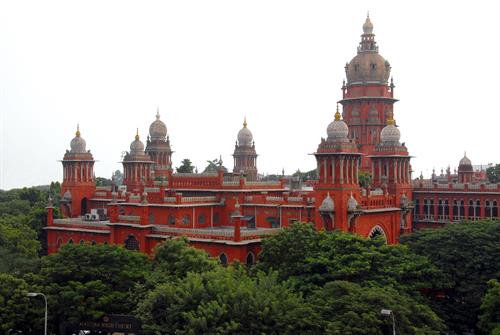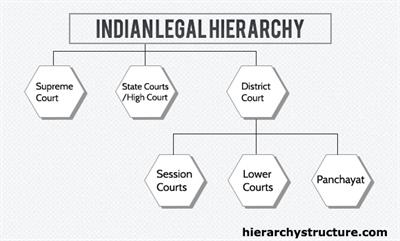PDF chapter test TRY NOW
The three main organs of government are the legislative, executive and judiciary.
The legislative branch makes laws, the executive branch enforces the laws, and the judiciary interprets the laws.
So we have discussed about the Legislative and Executive, let's learn about the Judiciary.
High court :
The High court occupies the top position in the judicial administration of a state.
The institution of high court originated in India in \(1862\ \)when the high courts were set up at Calcutta, Bombay and Madras.
The High court occupies the top position in the judicial administration of a state.
The institution of high court originated in India in \(1862\ \)when the high courts were set up at Calcutta, Bombay and Madras.
The Constitution of India provides for a high court for each state. It is an independent body.

Organization of High Court
Every high court consists of a Chief justice and such other judges appointed by the President. The number of Judges in the high court is not uniform and fixed.
Qualifications of Judges :
A person to be appointed as a judge of a high court, should have the following qualifications: 
A person to be appointed as a judge of a high court, should have the following qualifications:
1. He should be a citizen of India.
2. (a) He should have held a judicial office in the territory of India for ten years; or
(b) He should have been an advocate of a high court (or high courts in succession) for ten years.
2. (a) He should have held a judicial office in the territory of India for ten years; or
(b) He should have been an advocate of a high court (or high courts in succession) for ten years.
The High court judges hold office until he attains the age of 62 years.
Power and functions of High court :
- The High court has been vested with quite extensive and effective powers. It is the highest court of appeal in the state.
- It is the protector of the Fundamental Rights of the citizens.
- It is vested with the power to interpret the Constitution.
- Besides, it has supervisory and consultative roles.
Apart from High court, there are district courts and tribunals.
They ensure justice to the people without any bias. Apart from this, Family Courts are established to settle the disputes relating to marriages and family affairs.
They ensure justice to the people without any bias. Apart from this, Family Courts are established to settle the disputes relating to marriages and family affairs.

Lok Adalat
The Administrative Reforms Commission (ARC) of India (1966–1970) recommended the setting up of two special authorities designated as ‘Lokpal’
and ‘Lokayukta’ for the redressal of citizens’ grievances.
and ‘Lokayukta’ for the redressal of citizens’ grievances.
The Lokpal would deal with complaints against ministers and secretaries at Central and state levels, and the Lokayukta (one at the Centre and one in every state)would deal with complaints against other specified higher officials.
The institution of Lokayukta was established first in Maharashtra in \(1971\).
The institution of Lokayukta was established first in Maharashtra in \(1971\).
Reference:
https://www.hierarchystructure.com/indian-legal-system-hierarchy/
